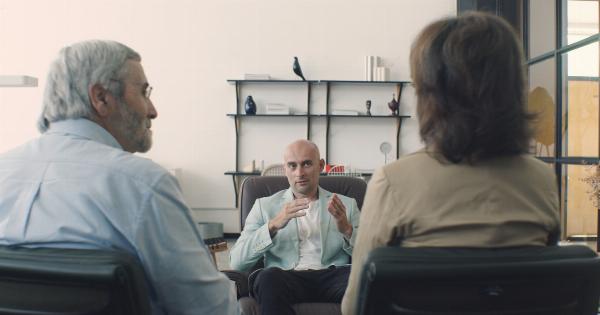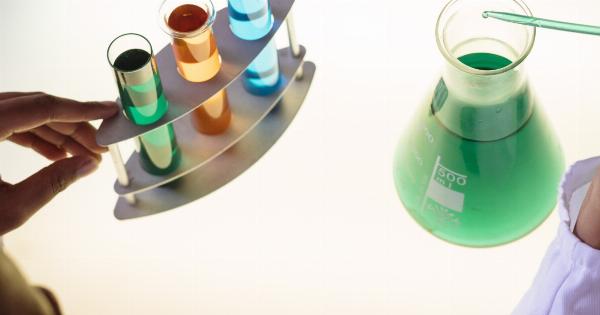Chronic obstructive pulmonary disease (COPD) affects millions of individuals worldwide. It is a progressive disease that affects the lungs, causing difficulty in breathing.
Currently, there is no cure for COPD, and treatment options available are only effective in managing the symptoms and slowing down the disease progression.
The development of a new drug cocktail, however, is bringing hope to COPD patients. This drug cocktail consists of three uniquely designed drugs that specifically targeted the mechanisms of COPD.
The combination drug was tested in a recent clinical trial and showed significant benefits in reducing COPD symptoms and improving lung function. This article delves into the details of the drug cocktail and its potential to transform the treatment of COPD.
Understanding COPD
COPD is a term used to describe a group of lung diseases that cause breathing difficulties. These diseases include chronic bronchitis, emphysema, and refractory asthma.
COPD is characterized by airflow limitation caused by inflammation and narrowing of the airways and destruction of the lung tissue. This causes shortness of breath, chronic cough, and excessive production of mucus.
COPD is primarily caused by smoking, environmental pollution, and genetics. Other risk factors include exposure to dust, chemicals, and respiratory infections. COPD affects people over the age of 40, and its prevalence is higher in men than women.
Current Treatment Options for COPD
COPD is a chronic disease, and there is no cure. The current treatment options aim to manage the symptoms and improve the quality of life for COPD patients. Treatments include medications, oxygen therapy, and pulmonary rehabilitation.
The medications used to manage COPD include bronchodilators, corticosteroids, and phosphodiesterase-4 inhibitors. These drugs help to relax the airway muscles, reduce inflammation, and clear mucus from the lungs.
Oxygen therapy is recommended for patients who have low oxygen levels in their blood. Oxygen therapy involves the use of a portable oxygen concentrator or a gas cylinder to deliver oxygen to the lungs.
Oxygen therapy can improve exercise capacity and reduce breathlessness.
Pulmonary rehabilitation involves a combination of exercises, education, and breathing techniques to improve lung function, reduce symptoms, and enhance the quality of life for COPD patients.
Pulmonary rehabilitation is usually recommended for patients with moderate to severe COPD.
The New Drug Cocktail for COPD
The new drug cocktail for COPD is a combination of three unique drugs that target the specific mechanisms of the disease. The drugs are:.
- AZD7624 – a PDE1 inhibitor that can increase cAMP, a signaling molecule that relaxes muscle cells in the airways, reducing inflammation and narrowing.
- ambrisentan – an endothelin receptor antagonist that inhibits the effects of endothelin-1, a molecule that can cause narrowing of the blood vessels in the lung and increase inflammation.
- budesonide – a corticosteroid that reduces inflammation in the airways and the lungs.
The drug cocktail was developed by AstraZeneca and tested in a clinical trial involving 120 COPD patients. The trial was a randomized, double-blind, placebo-controlled study that evaluated the safety and efficacy of the drug cocktail.
The patients were given either the drug cocktail or a placebo for 28 days.
The results of the trial showed that the drug cocktail significantly improved lung function and reduced COPD symptoms compared to the placebo.
The patients who received the drug cocktail had improved FEV1 (forced expiratory volume in one second) and FVC (forced vital capacity), which are measures of lung function. The drug cocktail also reduced COPD exacerbations, which are acute worsening of symptoms.
The Mechanism of Action of the Drug Cocktail
The drug cocktail works by targeting the specific mechanisms involved in the development of COPD. AZD7624, the PDE1 inhibitor, inhibits the breakdown of cAMP, which is a signaling molecule that relaxes the muscle cells in the airways.
Increased levels of cAMP reduce inflammation and narrowing of the airways, improving lung function and reducing COPD symptoms.
Ambrisentan, the endothelin receptor antagonist, inhibits the effects of endothelin-1, which is a molecule that can cause narrowing of the blood vessels in the lungs and increase inflammation.
By inhibiting the effects of endothelin-1, ambrisentan can improve blood flow to the lungs and reduce inflammation.
Budesonide, the corticosteroid, reduces inflammation in the airways and the lungs by inhibiting the production of cytokines and other mediators involved in the inflammatory response.
Potential Benefits of the Drug Cocktail
The drug cocktail shows great promise in the treatment of COPD. The combination of drugs targets the specific mechanisms involved in the development of COPD, providing a more effective treatment option compared to the current medications.
The drug cocktail can improve lung function and reduce COPD symptoms, leading to better quality of life for COPD patients.
The drug cocktail can also reduce COPD exacerbations, which are a major cause of morbidity and mortality in COPD patients. Exacerbations can lead to hospitalizations, respiratory failure, and death.
Reducing exacerbations can not only improve the quality of life for COPD patients but also reduce healthcare costs.
Conclusion
The new drug cocktail for COPD is a significant breakthrough in the treatment of this chronic disease.
The combination of AZD7624, ambrisentan, and budesonide targets the specific mechanisms involved in COPD, providing a more effective treatment option compared to the current medications. The drug cocktail showed significant benefits in reducing COPD symptoms, improving lung function, and reducing exacerbations.
The drug cocktail has the potential to transform the treatment of COPD and improve the quality of life and outcomes for COPD patients.






























